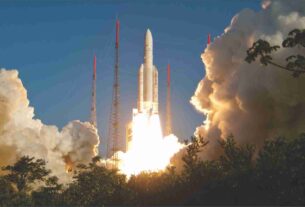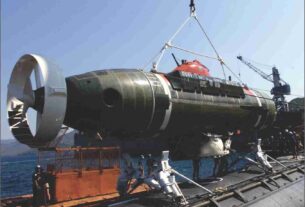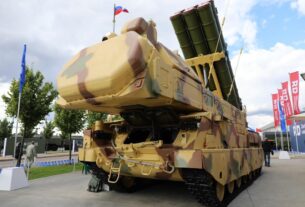Radar technology and its significance
The battlefield scenario is continuously changing with sophisticated emerging technologies and therefore the operational environment of modern radar systems is becoming increasingly more complex. Stealthy, long-range, high altitude, high speed, manoeuvering targets, intense jamming environment, large fluctuations of radar cross-section with small change of aspect angle of targets, pose challenges for efficient detection, tracking, measuring,
Radar technology has greatly evolved since its development, now serving many different commercial and military applications on the ground, in the air, and at sea.
Radar originally was developed to meet the needs of the military services, and it continues to have critical applications for national defence purposes. For instance, radars are used to detect aircraft, missiles, artillery and mortar projectiles, ships, land vehicles, and satellites. In addition, radar controls and guides weapons; allows one class of target to be distinguished from another; aids in the navigation of aircraft and ships; and assists in reconnaissance and damage assessment.
Radar has been a significant RF/microwave technology since the days of World War II. During that time, radar (radio detection and ranging) proved an invaluable military tool for locating threats and targets and providing advanced warnings of an adversary’s position and direction. The basic operation of a radar system involves transmitting a high-frequency signal (usually a pulsed signal) towards the location of an expected target and receiving signals reflected from said target. By performing signal processing on these radar returns, information can be extracted regarding the target, its position, and its speed.
Basic objective
Radar as a means of detection has been around for over 60 years, and although technology has become immensely more sophisticated than it was in the 1930’s, the basic requirement remains the same–to measure the range, bearing, and other attributes of a target. Regardless of whether the system is land-based, shipborne, airborne, or spaceborne, this remains true since whatever the target may be, aircraft, ship, land vehicles, pedestrians, land masses, precipitation, oceans–all provide returns of the transmitted radar energy. What has changed dramatically is the system design, the method and speed of processing the return radar signals, the amount of information which can be obtained, and the way that the information is displayed to the operator.
The principle of a radar system has not changed—sending out timed, pulsed signals and charting the direction and timing of their return reflections to learn more about what is causing those reflections-but the technology is now enhanced by advances in digital technology, in particular, modern data converters such as analog-to-digital converters and digital-to-analog converters. By digitizing and processing radar return signals, modern radar systems can perform any number of functions in support of different applications, including search, surveillance, target tracking, fire control, and weather monitoring.
Modern radar systems often have imaging capability, can yield digitized signals quickly and easily for use with graphical overlays, can be networked together so the total system is greater than the sum of its parts, and can serve several different functions such as wide-area search, target tracking, fire control, and weather monitoring where previous generations of radar technology required separate systems to do the same jobs.
The early radar systems were tube based and mechanically steered, and involved RF transmitters, RF receivers, analog signal processing, and a video display.
Later, radar systems improved in sensitivity to where they could virtually detect and monitor waves on the ocean and insects in the air. Increasing sensitivity, however, compounded one of the biggest challenges that radar systems confront so-called clutter, or reflected signals from objects that are not of interest.
By leveraging the signal processing possible with improved analog and digital components, modern radar receivers can increase sensitivity and overcome performance degradation from traditional problems such as clutter.
Electronically scanned antennas are a critical enabling technology for modern phased array radars. Primary mission applications have included air defense surveillance and track-while-scan radars, tactical ballistic missile defense, and counter-battery location systems.
Military radar systems can be divided into three main classes based on platform: land-based, ship borne, and airborne. Within these broad classes, there are several other categories based mainly on the operational use of the radar system. Though radars now a days are used in multi areas, these can be classified based on their primary use… for each of these radar types, they usually employ a characteristic waveform and signal processing that differentiate it from other radars.
The defense requirements and high accuracy needs of military forces around the globe expect improvement in the accuracy and precision of military radars. This is one of the prime factors for increased demand for precision guided systems. Laser guidance, ground reference, and other reference systems used for weapon guidance use various types of radar for functioning.
Ground Based radars segment is expected to be the major contributor to the overall military radars market. Ground-based radars systems are capable to get real-time information in warfare situations. To locate unexploded ordinance and tunnels, ground-based system is very effective. Movement near exterior walls, critical infrastructure, and building can be traced using ground-based systems. Ground-based radars are used along with airborne, naval, and satellite platform radars for target integration. Ongoing regional conflicts in the world are driving the demand for ground-based military radars.
Further, Asia-Pacific is expected to have the second-largest market share and highest growth rate in the global military radars market. Existence of regional conflict over the disputed area of South China Sea is a major factor that is compelling the authorities to increase naval surveillance capabilities in the affected region. The involved countries such as China, Taiwan, Vietnam, Malaysia, Brunei, and the Philippines have competing territorial and jurisdictional claims, particularly over rights to exploit the regions extensive reserves of oil and gas.
Modern ground-based radar systems are transportable by personnel as well as by vehicles, with some systems in service for a number of decades. Older military radar systems, whether of the ground-, maritime-, or avionic-based variety, are continuously upgraded as newer technologies become available.
Air Surveillance Radars are designed for early warning, land and maritime surveillance, whether for fixed-wing aircraft, helicopters, or remotely piloted vehicles (RPV’s).
Lockheed Martin has long been an innovative developer of reliable military radar systems for surveillance. The company’s Tactical Reconnaissance and Counter-Concealment (TRACER) radar system provides effective long-term surveillance of suspect operations by means of synthetic-aperture-radar (SAR) technology. The basic principle of SAR is to use data from multiple radar returns to form the equivalent image that would be produced by a single large aperture antenna. The time delay information from returned radar signals is also converted to spatial dimensional information to produce additional details about a target. TRACER is a dual-band (UHF and VHF) radar system capable of detecting targets through foiliage, rainfall, and even dust storms, providing real-time tactical ground imagery from the air. The use of the lower-frequency, longer-wavelength UHF and VHF signals compared to higher-frequency signals in many radar systems enables detection through dense foiliage.
Ongoing counter-terrorism and counter-insurgency operations present tough challenges that global military faces each day. Soldiers need surveillance and reconnaissance capabilities that provide a long-term stare at specific geographic locations so they can detect environmental changes, patterns, and asymmetric tactics. With Lockheed Martin’s Tactical Reconnaissance and Counter-Concealment (TRACER), militaries can have a long endurance surveillance capability for all operational environments.
Indian radars
Indian military too has got significant success in developing various types of radar. The Battlefield Surveillance Radar–Short Range (BFSR-SR) is a lightweight, man portable, user-friendly surveillance electronic sensor developed for the Indian Army. The radar is capable of searching a specified sector and performing track-while-scan (TWS) for multiple ground surface targets to provide all-weather surveillance against intrusion. BFSR is a fully coherent pulse Doppler radar. The low peak power provides the radar a low probability of intercept (LPI), making it difficult to intercept by enemy sensors.
The LLLR has been developed to protect valuable assets in the mountainous regions against aerial threats. It is a quadripod mounted fully outdoor shelterless equipment, rugged enough to operate in harsh environment, temperature extremes, and in strong windy conditions. The system provides excellent detection of low flying aerial threats like aircraft, helicopters and unmanned air vehicles (UAVs) against the background of intense mountain clutter.
3D LLLR is a multifaceted ground based S band 3D low-level lightweight semi distributed active aperture radar developed indigenously for deployment in diverse terrains like mountains, snow-bound high altitudes, deserts, urban high rise buildings, plains, etc., to meet the operational requirements of the IAF. The radar automatically detects and tracks heterogeneous air targets.
The 3D surveillance radar (3DSR) is a medium range surveillance system for the IAF to meet the operational requirements of a base radar. The radar is capable of TWS of airborne targets up to 150 km subject to line-of-sight (LoS) clearance and radar horizon. It employs multi-beam coverage in the receive mode to provide necessary discrimination in elevation.
The flexible architecture of the radar is a reliable and adaptable technology for multiple applications, i.e., early warning for air defence weapon system and air defence sensor at air bases
The 3D surveillance radar for Indian Navy is a stand-alone medium range, all-weather radar for the operational requirements. The radar is the first indigenously developed ship-borne medium range radar. It is capable of TWS for airborne and surface targets up to a range of 200 km. The radar has been evaluated by users for the detection of surface tracks, manoeuvring targets, cruise missiles and in intense ECM environment.
The weapon locating radar (WLR) is a coherent, electronically scanned, C band, pulse Doppler, passive phased array radar designed to detect and track automatically incoming artillery rounds, mortar and rockets, and locate the hostile launchers. It can also track and observe the fall of short from friendly rounds, to provide fire corrections to counter the enemy fire. The radar can detect mortars, artillery guns and unguided rockets at various distance.
Military uses were once the only applications for radar technology, but times have changed. Radar technology is now finding uses in many commercial, industrial, medical, weather, and especially automotive systems. These new and growing application areas are keeping radar designers-from integrated-circuit (IC) to system-level engineers-busy in search of high-performance, cost-effective solutions from RF through millimeter-wave frequencies.




